
How to Use ESP32 (30 pin): Examples, Pinouts, and Specs
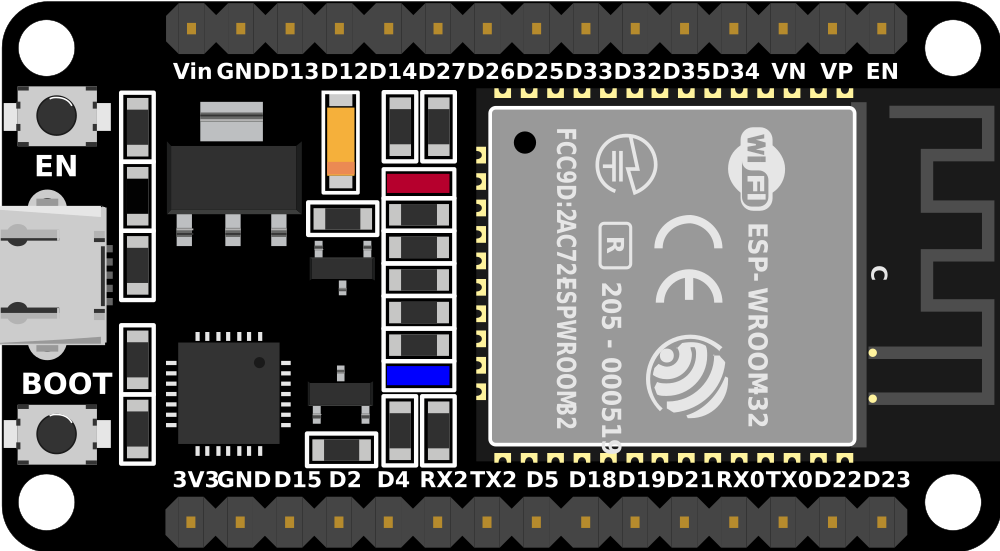
 Design with ESP32 (30 pin) in Cirkit Designer
Design with ESP32 (30 pin) in Cirkit DesignerIntroduction
The ESP32 is a powerful and versatile microcontroller designed for IoT (Internet of Things) applications and embedded systems. It features built-in Wi-Fi and Bluetooth capabilities, making it an excellent choice for projects requiring wireless communication. With its 30-pin configuration, the ESP32 provides a wide range of GPIO (General Purpose Input/Output) pins, ADC (Analog-to-Digital Converter) channels, PWM (Pulse Width Modulation) outputs, and other peripherals, enabling developers to create complex and feature-rich applications.
Explore Projects Built with ESP32 (30 pin)
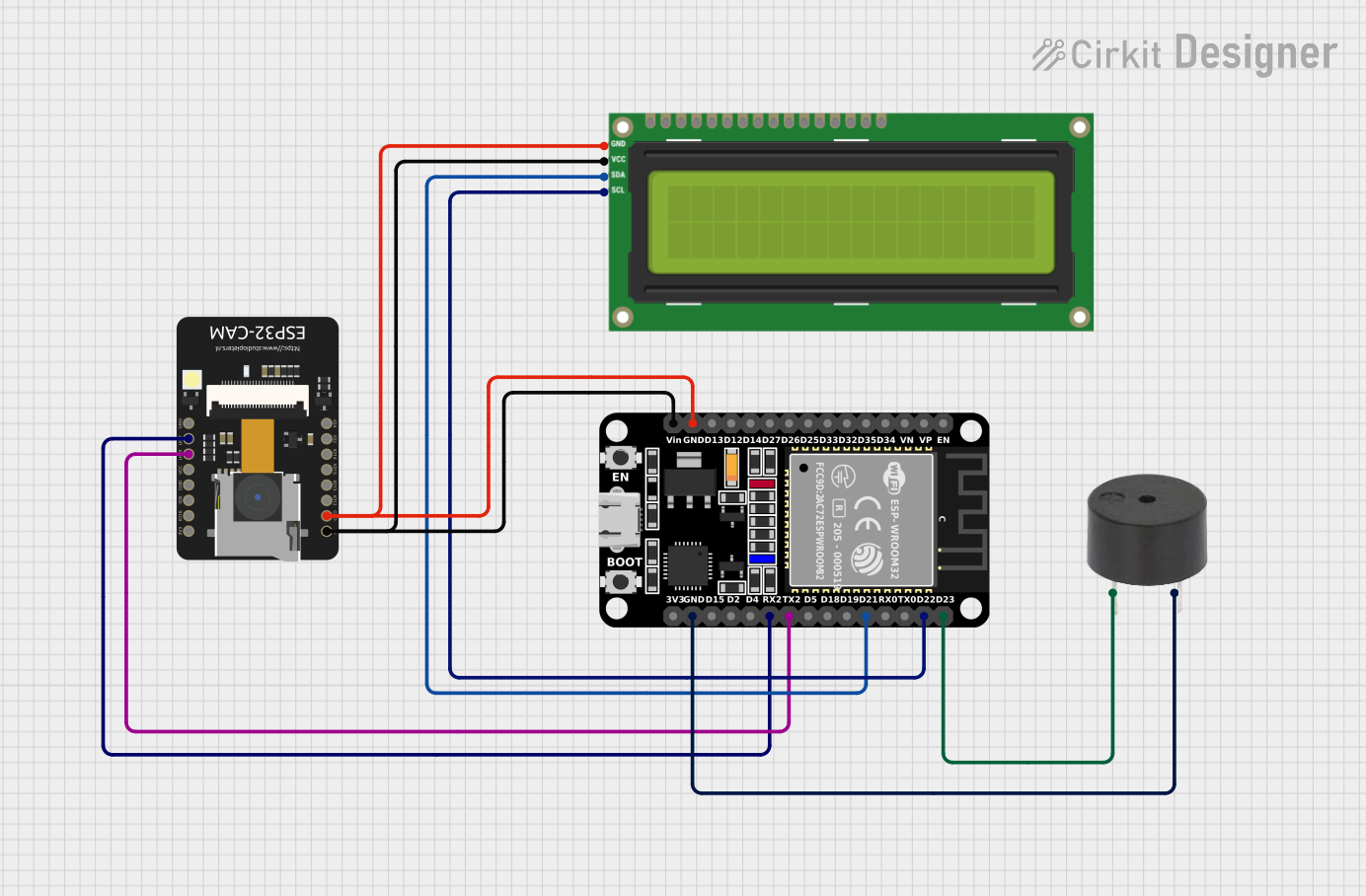
 Open Project in Cirkit Designer
Open Project in Cirkit Designer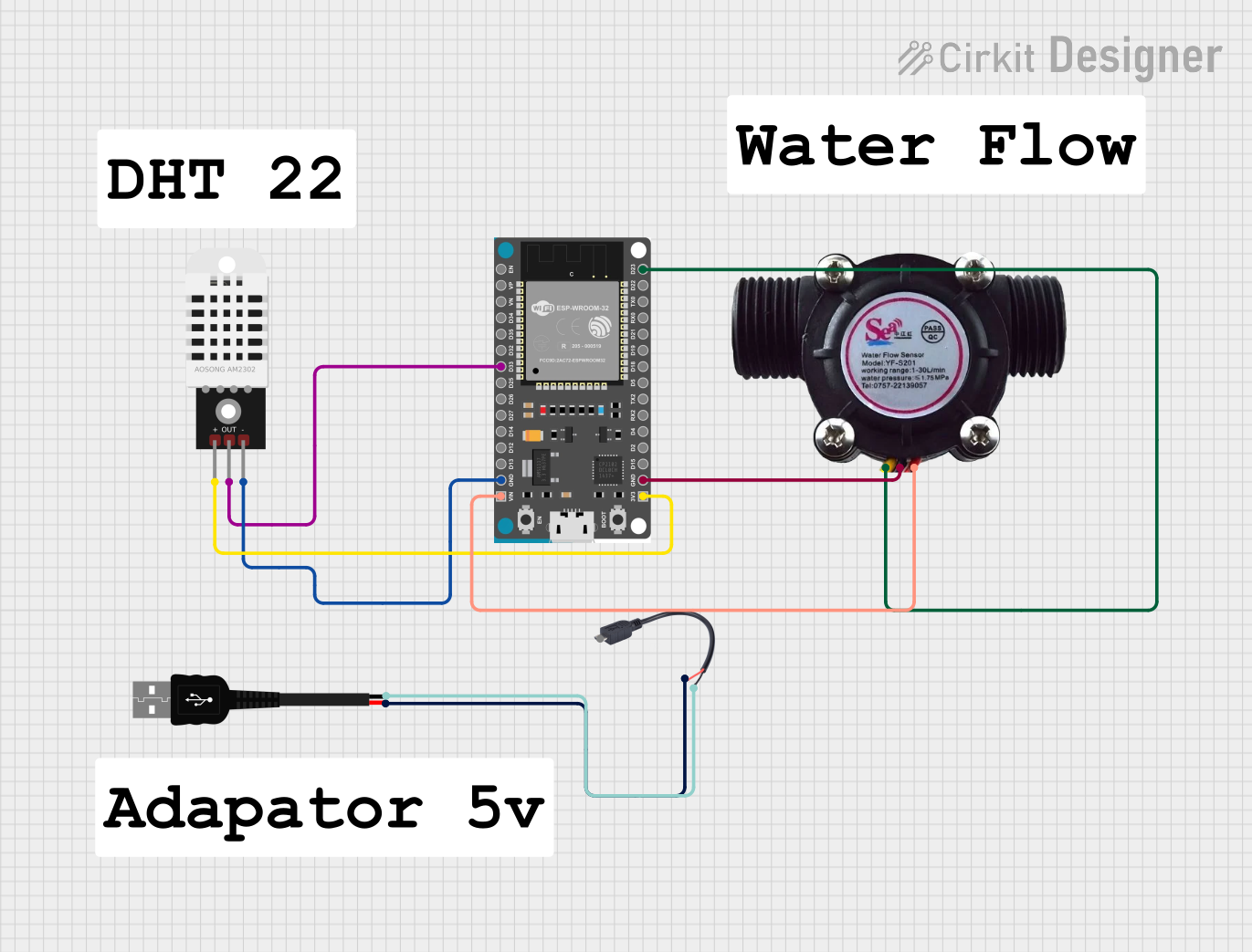
 Open Project in Cirkit Designer
Open Project in Cirkit Designer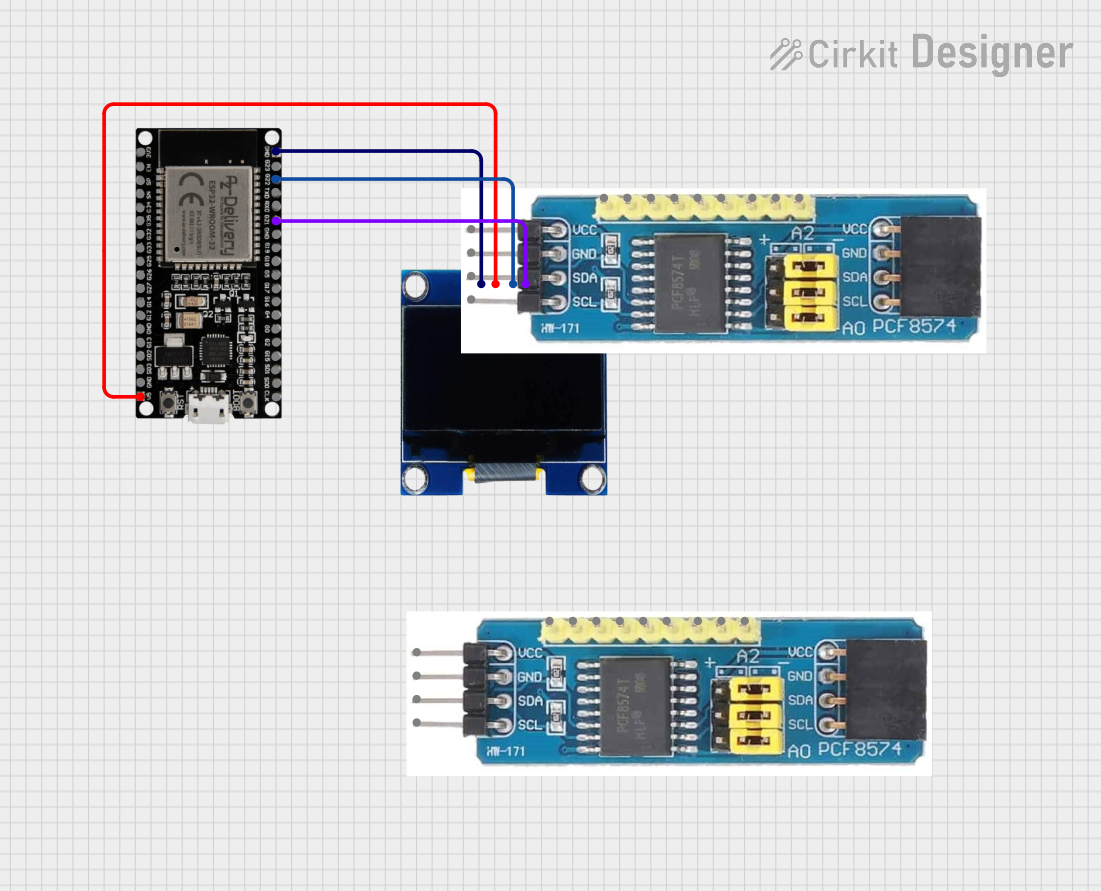
 Open Project in Cirkit Designer
Open Project in Cirkit Designer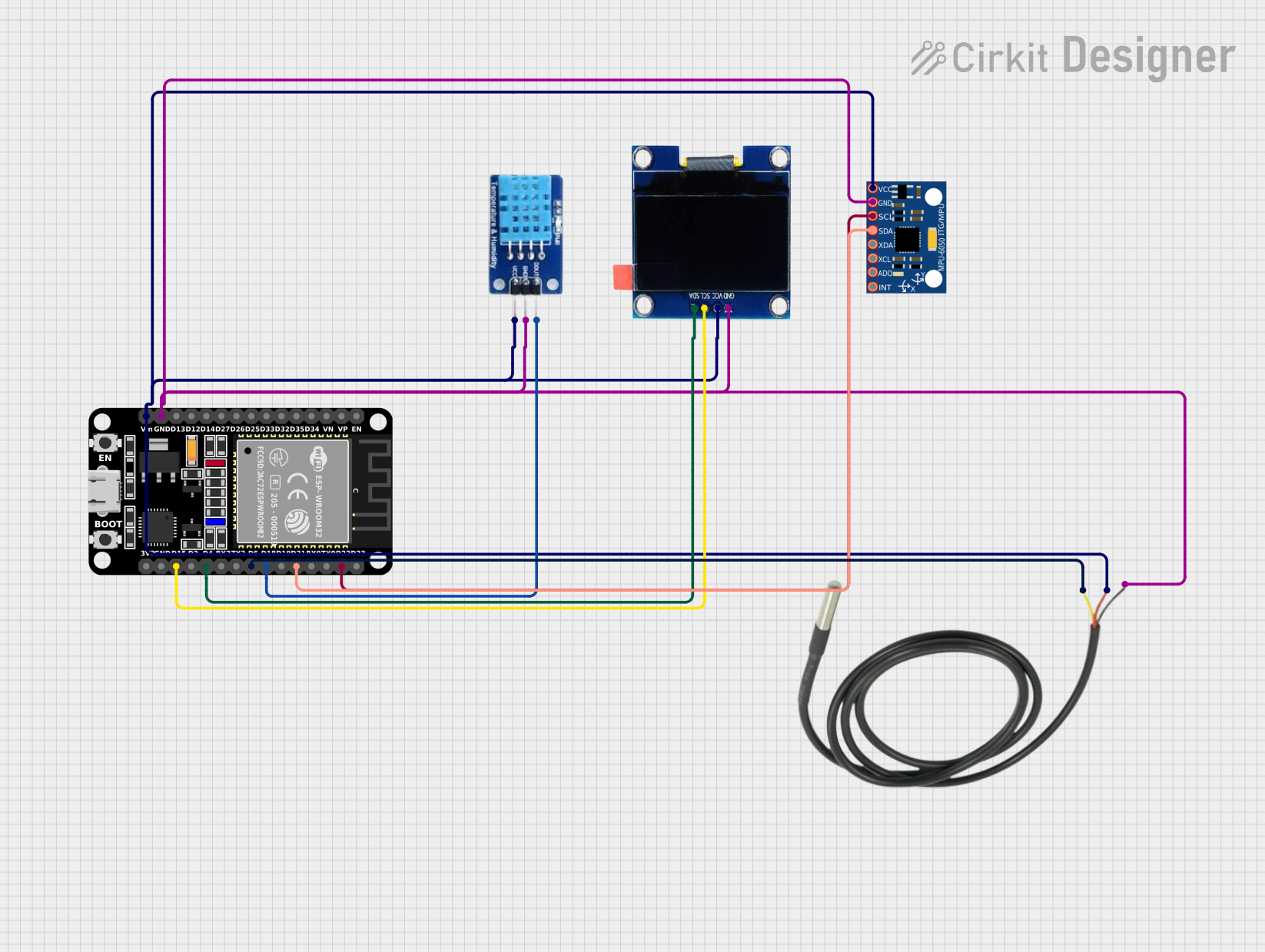
 Open Project in Cirkit Designer
Open Project in Cirkit DesignerExplore Projects Built with ESP32 (30 pin)

 Open Project in Cirkit Designer
Open Project in Cirkit Designer
 Open Project in Cirkit Designer
Open Project in Cirkit Designer
 Open Project in Cirkit Designer
Open Project in Cirkit Designer
 Open Project in Cirkit Designer
Open Project in Cirkit DesignerCommon Applications and Use Cases
- IoT devices and smart home automation
- Wireless sensor networks
- Wearable technology
- Robotics and drones
- Data logging and remote monitoring
- Industrial automation and control systems
Technical Specifications
The ESP32 (30 pin) microcontroller is equipped with robust hardware and features. Below are its key technical specifications:
Key Technical Details
- Processor: Dual-core Xtensa® 32-bit LX6 microprocessor
- Clock Speed: Up to 240 MHz
- Flash Memory: 4 MB (varies by model)
- SRAM: 520 KB
- Wi-Fi: 802.11 b/g/n (2.4 GHz)
- Bluetooth: v4.2 BR/EDR and BLE
- Operating Voltage: 3.3V
- Input Voltage Range: 5V (via USB) or 3.3V (via VIN pin)
- GPIO Pins: 30 pins (including ADC, DAC, PWM, I2C, SPI, UART)
- ADC Resolution: 12-bit
- DAC Resolution: 8-bit
- Power Consumption: Ultra-low power consumption in deep sleep mode (~10 µA)
Pin Configuration and Descriptions
The ESP32 (30 pin) has the following pinout:
| Pin Name | Type | Description |
|---|---|---|
| VIN | Power Input | Input voltage (5V) for powering the ESP32 via an external power source. |
| 3V3 | Power Output | Provides 3.3V output for external components. |
| GND | Ground | Ground connection. |
| EN | Enable | Enables or disables the ESP32. Active high. |
| IO0 | GPIO/Boot Mode | General-purpose I/O pin. Used for boot mode selection during programming. |
| IO2 | GPIO | General-purpose I/O pin. |
| IO4 | GPIO | General-purpose I/O pin. |
| IO5 | GPIO | General-purpose I/O pin. |
| IO12 | GPIO/ADC | General-purpose I/O pin with ADC functionality. |
| IO13 | GPIO/ADC | General-purpose I/O pin with ADC functionality. |
| IO14 | GPIO/ADC | General-purpose I/O pin with ADC functionality. |
| IO15 | GPIO/ADC | General-purpose I/O pin with ADC functionality. |
| IO16 | GPIO | General-purpose I/O pin. |
| IO17 | GPIO | General-purpose I/O pin. |
| IO18 | GPIO/SPI | General-purpose I/O pin with SPI functionality. |
| IO19 | GPIO/SPI | General-purpose I/O pin with SPI functionality. |
| IO21 | GPIO/I2C | General-purpose I/O pin with I2C functionality (SDA). |
| IO22 | GPIO/I2C | General-purpose I/O pin with I2C functionality (SCL). |
| IO23 | GPIO/SPI | General-purpose I/O pin with SPI functionality. |
| IO25 | GPIO/DAC | General-purpose I/O pin with DAC functionality. |
| IO26 | GPIO/DAC | General-purpose I/O pin with DAC functionality. |
| IO27 | GPIO/ADC | General-purpose I/O pin with ADC functionality. |
| IO32 | GPIO/ADC | General-purpose I/O pin with ADC functionality. |
| IO33 | GPIO/ADC | General-purpose I/O pin with ADC functionality. |
| IO34 | GPIO/ADC | Input-only pin with ADC functionality. |
| IO35 | GPIO/ADC | Input-only pin with ADC functionality. |
| RXD | UART RX | UART receive pin. |
| TXD | UART TX | UART transmit pin. |
| D0-D8 | GPIO | General-purpose I/O pins. |
Usage Instructions
How to Use the ESP32 in a Circuit
Powering the ESP32:
- Connect the VIN pin to a 5V power source or use the micro-USB port for power and programming.
- Ensure the GND pin is connected to the ground of your circuit.
Programming the ESP32:
- Use the Arduino IDE or ESP-IDF (Espressif IoT Development Framework) for programming.
- Install the ESP32 board package in the Arduino IDE via the Board Manager.
- Connect the ESP32 to your computer using a USB cable and select the appropriate COM port.
Connecting Peripherals:
- Use GPIO pins for digital input/output.
- Use ADC pins for analog input (e.g., sensors).
- Use I2C, SPI, or UART pins for communication with other devices.
Uploading Code:
- Write your code in the Arduino IDE or ESP-IDF.
- Press the "Upload" button in the IDE to flash the code to the ESP32.
- If required, hold the IO0 pin low during the upload process to enter boot mode.
Example Code for Arduino IDE
The following example demonstrates how to blink an LED connected to GPIO2:
// Define the GPIO pin for the LED
#define LED_PIN 2
void setup() {
pinMode(LED_PIN, OUTPUT); // Set GPIO2 as an output pin
}
void loop() {
digitalWrite(LED_PIN, HIGH); // Turn the LED on
delay(1000); // Wait for 1 second
digitalWrite(LED_PIN, LOW); // Turn the LED off
delay(1000); // Wait for 1 second
}
Important Considerations and Best Practices
- Always use a level shifter when interfacing 5V logic devices with the ESP32's 3.3V GPIO pins.
- Avoid exceeding the maximum current rating of the GPIO pins (12 mA per pin).
- Use decoupling capacitors near the power pins to reduce noise and improve stability.
- For deep sleep applications, ensure proper configuration of wake-up sources.
Troubleshooting and FAQs
Common Issues and Solutions
ESP32 Not Detected by the Computer:
- Ensure the USB cable is functional and supports data transfer.
- Install the correct USB-to-serial driver for your operating system.
Code Upload Fails:
- Check the COM port and board settings in the Arduino IDE.
- Hold the IO0 pin low during the upload process if necessary.
Wi-Fi Connection Issues:
- Verify the SSID and password in your code.
- Ensure the Wi-Fi network is within range and operational.
Random Resets or Instability:
- Check the power supply for sufficient current (at least 500 mA).
- Add decoupling capacitors to stabilize the power supply.
FAQs
Q: Can the ESP32 operate on battery power?
A: Yes, the ESP32 can be powered by a LiPo battery connected to the VIN pin. Use a voltage regulator if necessary.
Q: How do I use the ESP32's Bluetooth functionality?
A: The ESP32 supports both Bluetooth Classic and BLE. Use the BluetoothSerial or BLE libraries in the Arduino IDE to implement Bluetooth features.
Q: What is the maximum number of GPIO pins I can use?
A: The ESP32 (30 pin) provides up to 25 GPIO pins, but some pins may have specific functions or limitations.
Q: Can I use the ESP32 for real-time applications?
A: While the ESP32 is not a real-time processor, its dual-core architecture and RTOS support make it suitable for many real-time tasks.